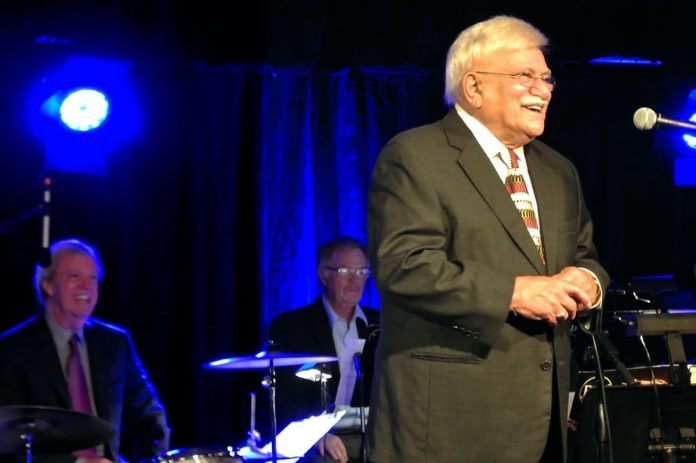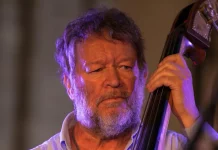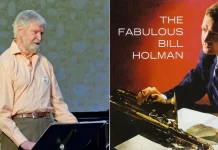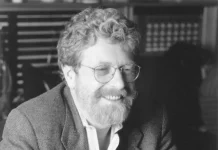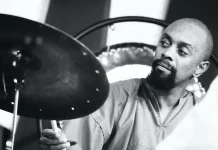The American Dream suggests that for those ready to work hard, America will deliver success. For Luigi Nistico, a small boy from Naples who travelled to Ellis Island, New York in spring 1911, the dream came true, especially in the person of his son Samuel Luigi Nistico.
Born in Pittsburgh, 6 February 1924, Samuel Nistico became one of the most highly regarded of jazz arrangers – after a change of name. As a young man, he came across his father’s navy bible which had his name misspelt on the cover, reading “Luigi Nestico”. Because his name was often being misspelt Sammy decided to adopt this new spelling.
While growing up during the Depression, Nestico listened to the radio and became fascinated by the big band, developing a particular passion for the work of Tommy Dorsey. Inspired by the trombonist, he took up the instrument himself whilst in eighth grade. He attended the Stanley Theatre, Pittsburgh every Saturday for a quarter and would admire the bands between the films, often staying all day watching three in a row.
At the age of 17, Nestico joined Pittsburgh’s ABC radio station WCAE before going on to become part of Charlie Barnet’s big band in 1946. Despite his rapid success, his mother pressed him to pursue a bachelor’s degree. By 1950, Nestico had graduated from Duquesne University with a qualification in music education.
Upon completion and after a year of teaching, Nestico noticed an opening in the Air Force Band in Washington, D.C. After a successful audition, he became the arranger and subsequently the director of the Airmen of Note. Previously, the band was central to the sound of Glenn Miller, but during his 15-year spell Nestico took a more contemporary direction. The USAF continue to give an annual award in his honour, titled the Sammy Nestico Arranging Award.
Following his time in the Air Force Band, Nestico enrolled in the United States Marine Band, becoming director of the White House orchestra and leading significant receptions in the Kennedy and Johnson years. Nestico managed to control himself when Johnson responded to one of his compositions with “You call this music?” In 2009 Nestico recalled “I didn’t answer, although I didn’t think [Johnson’s] concept of music was worth a damn.”
From 1970 to 1984, Nestico was composer and arranger for the Basie orchestra, conducting 10 albums of original material, four of which won Grammy awards. He had been introduced to Basie through his first cousin Sal Nistico, with the aid of his relatives. Basie’s orchestra had come to Washington (when Sammy was still with the Marine Band) and Nestico introduced himself alongside Pittsburgh partner and trombonist Grover Mitchell. Meanwhile, Nestico had done an arrangement of The Queen Bee, which he gave to Basie. Within a couple of months he received a message from Mitchell saying “The Chief likes your charts. Write some more.” After that, Nestico went on to write further pieces leading to his first album with the orchestra, Basie Straight Ahead.
After moving to Hollywood via Basie, Nestico worked beside Billy May with Capitol Records, transcribing 630 songs from 78 rpm mono recordings so that they could be re-recorded and performed in high fidelity stereophonic sound.
Nestico called himself a “hit and miss” writer, his learning method involving making a lot of mistakes. He honed his craft by listening to figures he wanted to emulate, such as Duke Ellington, Billy May and Henry Mancini. With knowledge accumulated, he published in 1993 the arranger’s handbook The Complete Arranger, now available in four languages. He then moved on to become a professor of music at the University of Georgia from 1998 to 1999.
Displaying a wealth of melodic creativity and harmonic dexterity, Nestico’s art was exquisitely developed. He was an expert in contrapuntal writing and was able to make the most complex music sound attractive and appealing. Nestico regularly compared his objective to the words of Rachmaninoff, who said “I like to write music that goes straight to your heart before it goes to your brain.” His music was even accused of being too beautiful. In keeping with that, he was famous for having one of the broadest smiles in the jazz business.
Sammy Nestico’s final album, Every Star Above, is set to be released in May. It’s a tribute to Billie Holiday devised at the end of 2019 with country singer Mandy Barnett that reimagines the 1958 album Lady In Satin.
In his long career Nestico contributed to albums by Phil Collins, Buddy Rich, Frank Sinatra, Michael Bublé and Bing Crosby. He was also responsible for scores that appeared in The Color Purple, Hawaii Five-O and Heaven Can Wait. Bill Yeager, director of jazz studies at San Diego State University, said “You go anywhere in the world and Sammy’s music is a dominant factor in all big-band playing. Sammy is the Rolls Royce of arrangers and composers.”
Sammy Nestico continued to be musically active before receiving hospice care in October 2020. He died 17 January 2021 at the age of 96 from natural causes. He is survived by his wife, Shirley Nestico and their three sons.

